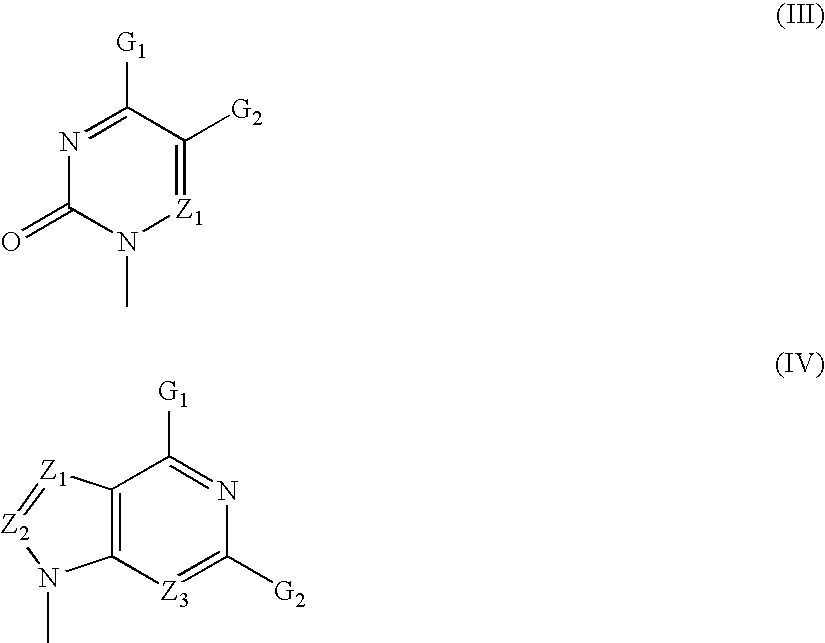Nucleotide mimics and their prodrugs
a technology of nucleotide mimics and prodrugs, applied in the direction of sugar derivatives, biocide, plant growth regulators, etc., can solve the problems of complex process of transformation of normal cells into cancer cells, drug-resistant life-threatening bacteria, and major threat to human health
- Summary
- Abstract
- Description
- Claims
- Application Information
AI Technical Summary
Benefits of technology
Problems solved by technology
Method used
Image
Examples
example 1
2′-Deoxy-(E)-2′-fluoromethylenecytidine 5′-imidodiphosphate (3)
[0919] Trichloro[(dichlorophosphoryl)imido]phosphorane (83 mg, 0.39 mmol) was added to 2′-deoxy-(E)-2′-fluoromethylenecytidine (50 mg, 0.19 mmol) in anhydrous trimethyl phosphate (3 mL) at −15° C. under an argon atmosphere. After stirring for 2 h the reaction mixture was poured into ice-cold triethylammonium bicarbonate (TEAB) solution (pH 7.0, 1.0 M, 5 mL) and stirred for 30 minutes. Purification by HPLC gave 9.0 mg of the titled compound 3.
example 2
2′-Deoxy-(E)-2′-fluoromethylenecvtidine 5′-methylenediphosphonate (4)
[0920] Methanephosphonic dichloride (98 mg, 0.39 mmol) was added to 2′-deoxy-(E)-2′-fluoromethylenecytidine (50 mg, 0.19 mmol) in anhydrous trimethyl phosphate (3 mL) at −15° C. under an argon atmosphere. After stirring for 2 h the reaction mixture was poured into an ice-cold TEAB solution (1.0 M, 5 mL) and stirred for 30 minutes. Purification by HPLC gave 8.6 mg of the titled compound 4.
example 3
2′-Deoxy-2′,2′-difluorocvtidine-5′-methylenediphosphonate (5)
[0921] 2′-Deoxy-2′,2′-difluorocytidine (0.2 g, 0.76 mmol) was dissolved in anhydrous trimethyl phosphate (2 mL) and stirred with molecular sieves under an argon atmosphere for 16 h. The mixture was cooled to −20° C. under an argon atmosphere and methylenebis(phosphonic dichloride) (380 mg, 1.52 mmol) was added. After stirring for I h the mixture was quenched using ice-cold TEAB solution (1.0 M, 10 mL) and stirred for 30 minutes. Purification by HPLC gave 28.9 mg of the titled compound.
PUM
 Login to View More
Login to View More Abstract
Description
Claims
Application Information
 Login to View More
Login to View More - R&D
- Intellectual Property
- Life Sciences
- Materials
- Tech Scout
- Unparalleled Data Quality
- Higher Quality Content
- 60% Fewer Hallucinations
Browse by: Latest US Patents, China's latest patents, Technical Efficacy Thesaurus, Application Domain, Technology Topic, Popular Technical Reports.
© 2025 PatSnap. All rights reserved.Legal|Privacy policy|Modern Slavery Act Transparency Statement|Sitemap|About US| Contact US: help@patsnap.com



